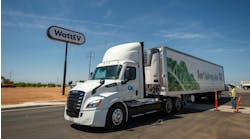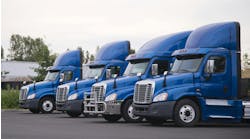The temptation is to say, “Here we go again.” But that would vastly undersell the magnitude of what will have been achieved when diesel engines are certified to the 2010 emission levels set by the EPA at the beginning of this decade. As one engineer involved in the development of those engines put it, “We'll essentially be at zero levels for the two pollutants EPA is regulating.” As others have pointed out, in many American cities the air going into a 2010 diesel will be dirtier than the air coming out the exhaust.
Of course, the devil is in the details, and how exactly engine and truck manufacturers get to the required 2010 levels for particulate matter (PM) and oxides of nitrogen (NOx) is the important part if you run a truck fleet. As we did with the transition to 2007 engine emissions, Fleet Owner is launching a series of updates that will chart the progress over the next two years as this next stage of diesel emissions moves from the engineers' labs to the production lines.
As this first edition of “Countdown to 2010” makes clear, the initial development work is nearly complete, and it's possible already to see performance characteristics emerging, as well as issues still to be resolved. Look for more real-world performance details in May when we present the next installment of Fleet Owner's “Countdown to 2010.”
Caterpillar
Caterpillar's solution for 2010 will be built off the ACERT Technology platform, according to the company. First introduced in 2003, ACERT Technology relies on four systems to lower emissions — air management, precision combustion, advanced electronics and effective aftertreatment. Caterpillar's 2007-compliant engines added two new features to the ACERT platform: Clean Gas Induction — a proprietary process that draws off a small amount of non-combustible gas after it has passed the engine's aftertreatment system, cools it, blends it with more incoming cool air and returns it to the combustion chamber — and a Diesel Particulate Filter featuring Caterpillar's own Cat Regeneration System (CRS).
“We are confident that the breakthroughs that will be incorporated into the final ACERT product for 2010 will continue to offer customers the best overall value,” says Mike Powers, product development manager for global on-highway at Caterpillar. “The details of the 2010 solution will be communicated in more detail in the months to come, but rest assured, it will be a solution that will provide customers with the value they have come to expect from Caterpillar.”


